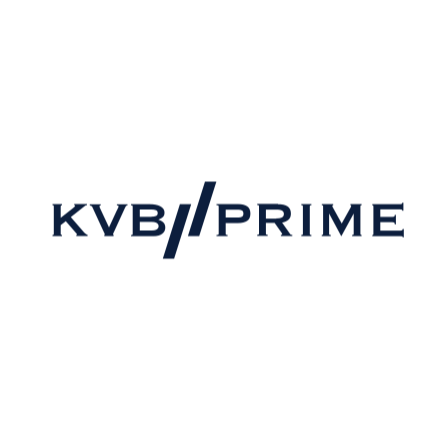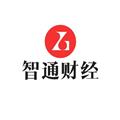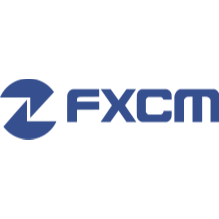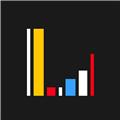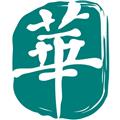黎巴嫩鎊
黎巴嫩鎊簡介
黎巴嫩貨幣爲黎巴嫩鎊,輔幣爲皮阿斯特,1500黎巴嫩鎊可兌換1美元,180多黎巴嫩鎊可兌換1元人民幣;雖然該種貨幣非國際自由流通貨幣,但在該國卻可以使用各國貨幣並可自由兌換。雪松是黎巴嫩的特產,也叫黎巴嫩杉,是該國的象徵,代表神聖、永遠、和平之意。在黎巴嫩現有的三片杉樹中,北部座落在黎巴嫩山頂峯山腰附近的一片最爲有名,約有二十棵樹齡超過4000年,其中一棵杉樹則成爲黎巴嫩貨幣上的代表性圖案。
黎巴嫩鎊是黎巴嫩流通貨幣,硬幣面值爲100、250和500皮阿斯特,紙幣面值爲100、250、500、1000、5000、10000、50000和100000。美元也是流通貨幣。
1LBP=100 piastres(皮阿斯特)
待翻譯
The Lebanese Pound
The lira (Arabic, ????) or livre (French) (English pound, ISO 4217 code: LBP) is the currency unit of Lebanon. It is divided into 100 qirsh (Arabic, ???) or piastres (French) but inflation has eliminated the subdivisions.
The plural form of lira, as used on the currency, is either lirat (?????) or the same, whilst there are four plural forms for qirsh: qirshan (?????), qirush (????), qirsha (????) or the same. In both cases, the number determines which plural form is used. Note that before the Second World War, the Arabic spelling of the subdivision was ??? (girsh). All of Lebanon's coins and banknotes are bilingual in Arabic and French.
History
Before World War I, the Ottoman lira was used. After the fall of the Ottoman Empire, the currency became the Egyptian pound in 1918. Upon gaining control of Syria and Lebanon, the French replaced the Egyptian pound with a new currency for Syria and Lebanon, the Syrian pound, which was linked to the French franc at a value of 1 pound = 20 francs. Lebanon issued its own coins from 1924 and banknotes from 1925. In 1939, the Lebanese currency was officially separated from that of Syria, though it was still linked to the French franc and remained interchangeable with Syrian money. In 1941, following France's defeat by Nazi Germany, the currency was linked instead to the British pound sterling at a rate of 8.83 lira = 1 pound. A link to the French franc was restored after the war but was abandoned in 1949.
Before the war of 1975-1991, 1 U.S. dollar was worth 3 lirat. According to the central bank's data, 1 U.S. dollar has been equal to 1507.5 lira in the entire year 2006.
Lebanese Coins
Lebanon's first coins were issued in 1924 in denominations of 2 and 5 girush (note the different spelling to post WWII coins) with the French denominations given in "piastres syriennes" (Syrian piastres). Later issues did not include the word "syriennes" and were in denominations of ?, 1, 2, 2?, 5, 10, 25 and 50 girsha. During World War II, rather crude ?, 1 and 2? girsh coins were issued.
After the war, the Arabic spelling was changed from girsh (???) to qirsh (???). Coins were issued in the period 1952 to 1986 in denominations of 1, 2?, 5, 10, 25 and 50 qirsh and 1 lira. No coins were issued between 1986 and 1996, when the current series of coins was introduced. Coins are currently issued in denominations of 50 livres, 100 livres, 250 livres and 500 livres.
Lebanese Banknotes
Lebanon's first banknotes were issued by the Bank of Syria and Greater Lebanon (Banque du Syrie et Grand-Liban) in 1925. Denominations ran from 25 girsha through to 100 lira. In 1939, the bank's name was changed to the Bank of Syria and Lebanon. The first 250 lira notes appeared that year. Between 1942 and 1950, the government issued "small change" paper money in denominations of 5, 10, 25 and 50 girsh or qirsh (the change in spelling occurred during these years). After 1945, the Bank of Syria and Lebanon continued to issue paper money for Lebanon but the notes were denominated specifically in "Lebanese lira" (???? ???????, livres libanaise) to distinguish them from Syrian notes. Notes for 1, 5, 10, 25, 50 and 100 lira were issued. In 1964, the Bank of Lebanon took over banknote production. Their notes are denominated in lira and livres. A 250 lira note reappeared in 1978, followed by higher denominations in the 1980s and 90s as inflation drastically reduced the currency's value. Banknotes in current use are 1000 livres, 5000 livres, 10,000 livres, 20,000 livres, 50,000 livres and 100,000 livres.
黎巴嫩鎊樣幣 黎巴嫩鎊鑄幣
黎巴嫩貨幣爲黎巴嫩鎊,輔幣爲皮阿斯特,1500黎巴嫩鎊可兌換1美元,180多黎巴嫩鎊可兌換1元人民幣;雖然該種貨幣非國際自由流通貨幣,但在該國卻可以使用各國貨幣並可自由兌換。雪松是黎巴嫩的特產,也叫黎巴嫩杉,是該國的象徵,代表神聖、永遠、和平之意。在黎巴嫩現有的三片杉樹中,北部座落在黎巴嫩山頂峯山腰附近的一片最爲有名,約有二十棵樹齡超過4000年,其中一棵杉樹則成爲黎巴嫩貨幣上的代表性圖案。
黎巴嫩鎊是黎巴嫩流通貨幣,硬幣面值爲100、250和500皮阿斯特,紙幣面值爲100、250、500、1000、5000、10000、50000和100000。美元也是流通貨幣。
1LBP=100 piastres(皮阿斯特)
待翻譯
The Lebanese Pound
The lira (Arabic, ????) or livre (French) (English pound, ISO 4217 code: LBP) is the currency unit of Lebanon. It is divided into 100 qirsh (Arabic, ???) or piastres (French) but inflation has eliminated the subdivisions.
The plural form of lira, as used on the currency, is either lirat (?????) or the same, whilst there are four plural forms for qirsh: qirshan (?????), qirush (????), qirsha (????) or the same. In both cases, the number determines which plural form is used. Note that before the Second World War, the Arabic spelling of the subdivision was ??? (girsh). All of Lebanon's coins and banknotes are bilingual in Arabic and French.
History
Before World War I, the Ottoman lira was used. After the fall of the Ottoman Empire, the currency became the Egyptian pound in 1918. Upon gaining control of Syria and Lebanon, the French replaced the Egyptian pound with a new currency for Syria and Lebanon, the Syrian pound, which was linked to the French franc at a value of 1 pound = 20 francs. Lebanon issued its own coins from 1924 and banknotes from 1925. In 1939, the Lebanese currency was officially separated from that of Syria, though it was still linked to the French franc and remained interchangeable with Syrian money. In 1941, following France's defeat by Nazi Germany, the currency was linked instead to the British pound sterling at a rate of 8.83 lira = 1 pound. A link to the French franc was restored after the war but was abandoned in 1949.
Before the war of 1975-1991, 1 U.S. dollar was worth 3 lirat. According to the central bank's data, 1 U.S. dollar has been equal to 1507.5 lira in the entire year 2006.
Lebanese Coins
Lebanon's first coins were issued in 1924 in denominations of 2 and 5 girush (note the different spelling to post WWII coins) with the French denominations given in "piastres syriennes" (Syrian piastres). Later issues did not include the word "syriennes" and were in denominations of ?, 1, 2, 2?, 5, 10, 25 and 50 girsha. During World War II, rather crude ?, 1 and 2? girsh coins were issued.
After the war, the Arabic spelling was changed from girsh (???) to qirsh (???). Coins were issued in the period 1952 to 1986 in denominations of 1, 2?, 5, 10, 25 and 50 qirsh and 1 lira. No coins were issued between 1986 and 1996, when the current series of coins was introduced. Coins are currently issued in denominations of 50 livres, 100 livres, 250 livres and 500 livres.
Lebanese Banknotes
Lebanon's first banknotes were issued by the Bank of Syria and Greater Lebanon (Banque du Syrie et Grand-Liban) in 1925. Denominations ran from 25 girsha through to 100 lira. In 1939, the bank's name was changed to the Bank of Syria and Lebanon. The first 250 lira notes appeared that year. Between 1942 and 1950, the government issued "small change" paper money in denominations of 5, 10, 25 and 50 girsh or qirsh (the change in spelling occurred during these years). After 1945, the Bank of Syria and Lebanon continued to issue paper money for Lebanon but the notes were denominated specifically in "Lebanese lira" (???? ???????, livres libanaise) to distinguish them from Syrian notes. Notes for 1, 5, 10, 25, 50 and 100 lira were issued. In 1964, the Bank of Lebanon took over banknote production. Their notes are denominated in lira and livres. A 250 lira note reappeared in 1978, followed by higher denominations in the 1980s and 90s as inflation drastically reduced the currency's value. Banknotes in current use are 1000 livres, 5000 livres, 10,000 livres, 20,000 livres, 50,000 livres and 100,000 livres.
黎巴嫩鎊樣幣 黎巴嫩鎊鑄幣
-
黎巴嫩鎊鑄幣
熱門資訊更多
英鎊/日元 當日內: 看漲,當 195.62 爲支撐位。
04/26 18:17
KVB昆侖國際
歐元/日元 當日內: 看漲,當 167.77 爲支撐位。
04/26 18:17
KVB昆侖國際
美元/新加坡元 當日內: 看漲,當 1.3588 爲支撐位。
04/26 18:17
KVB昆侖國際
澳元/日元 當日內: 看漲,當 102.09 爲支撐位。
04/26 18:16
KVB昆侖國際
歐元/英鎊 當日內: 看跌,當 0.8586 爲阻力位。
04/26 18:16
KVB昆侖國際

